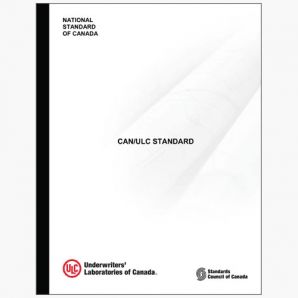
CAN/ULC-S601-14 Standard for Shop Fabricated Steel Aboveground Tanks for Flammable and Combustible Liquids Fifth Edition (Including Erratum 1)
ULC CAN/ULC-S601-14 Standard for Shop Fabricated Steel Aboveground Tanks for Flammable and Combustible Liquids Fifth Edition (Including Erratum 1)
More About This Product
This Standard sets forth minimum requirements for steel, non-pressure tanks that are used for the aboveground storage of mmable and combustible liquids compatible with the material of construction and with a specific gravity not greater than 1.0.
NOTE: These tanks may also be used for the storage of used oil. For tanks intended solely for the collection of used oil, refer to CAN/ULC-S652, Standard for Tank Assemblies for the Collection of Used Oil. This Standard covers tanks, which are fabricated, inspected and tested for leakage before shipment from the factory. This Standard covers the construction of tanks for use in stationary installations. Tanks fabricated in accordance with this Standard are not intended for the transportation of flammable and combustible liquids nor are they intended to be transported while containing such liquids.
NOTE: Relocation of tanks other than utility tanks is subject to the requirements of the authority having jurisdiction. Section 4 of this Standard covers the construction of single wall tanks. Section 5 covers the construction of tanks with secondary containment. This Standard also covers aboveground steel, rectangular, non-pressure workbench tanks for the combined use as a working surface and storage of lubricating oils having capacities up to and including 2500 L. This Standard also covers aboveground steel, rectangular, non-pressure, generator-base tanks. This Standard also covers utility tanks and double bottom utility tanks designed to allow for location as required by their intended service. These tanks are for installation at locations such as farms, construction sites, demolition sites, exploration sites, forestry operations and similar locations. This Standard does not cover wind loading or seismic loading of tanks. However, Guidelines for the Maximum Structural Limitations for Vertical Tanks (A2) are included in Appendix A (Informative), Explanatory Materials.
This Standard sets forth minimum requirements for steel, non-pressure tanks that are used for the aboveground storage of mmable and combustible liquids compatible with the material of construction and with a specific gravity not greater than 1.0.
NOTE: These tanks may also be used for the storage of used oil. For tanks intended solely for the collection of used oil, refer to CAN/ULC-S652, Standard for Tank Assemblies for the Collection of Used Oil. This Standard covers tanks, which are fabricated, inspected and tested for leakage before shipment from the factory. This Standard covers the construction of tanks for use in stationary installations. Tanks fabricated in accordance with this Standard are not intended for the transportation of flammable and combustible liquids nor are they intended to be transported while containing such liquids.
NOTE: Relocation of tanks other than utility tanks is subject to the requirements of the authority having jurisdiction. Section 4 of this Standard covers the construction of single wall tanks. Section 5 covers the construction of tanks with secondary containment. This Standard also covers aboveground steel, rectangular, non-pressure workbench tanks for the combined use as a working surface and storage of lubricating oils having capacities up to and including 2500 L. This Standard also covers aboveground steel, rectangular, non-pressure, generator-base tanks. This Standard also covers utility tanks and double bottom utility tanks designed to allow for location as required by their intended service. These tanks are for installation at locations such as farms, construction sites, demolition sites, exploration sites, forestry operations and similar locations. This Standard does not cover wind loading or seismic loading of tanks. However, Guidelines for the Maximum Structural Limitations for Vertical Tanks (A2) are included in Appendix A (Informative), Explanatory Materials.
